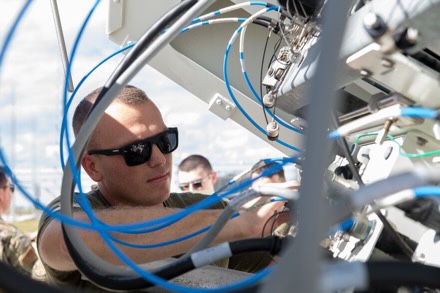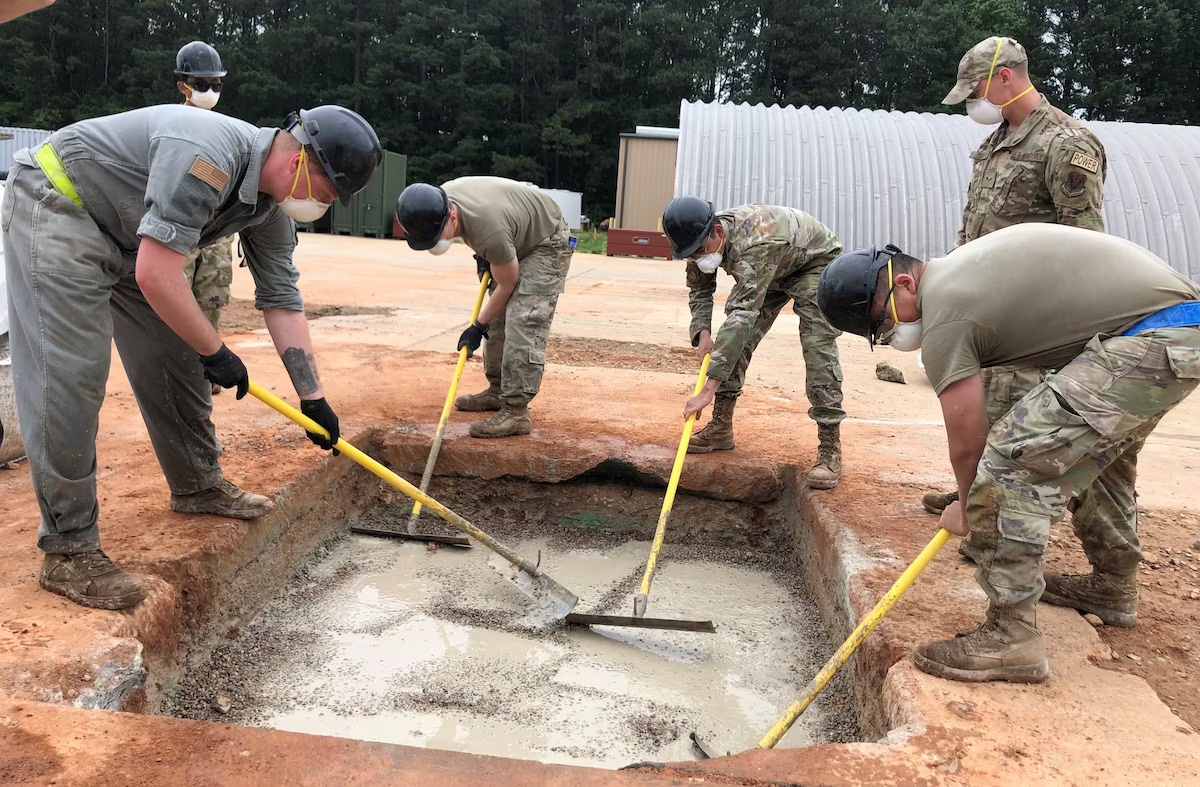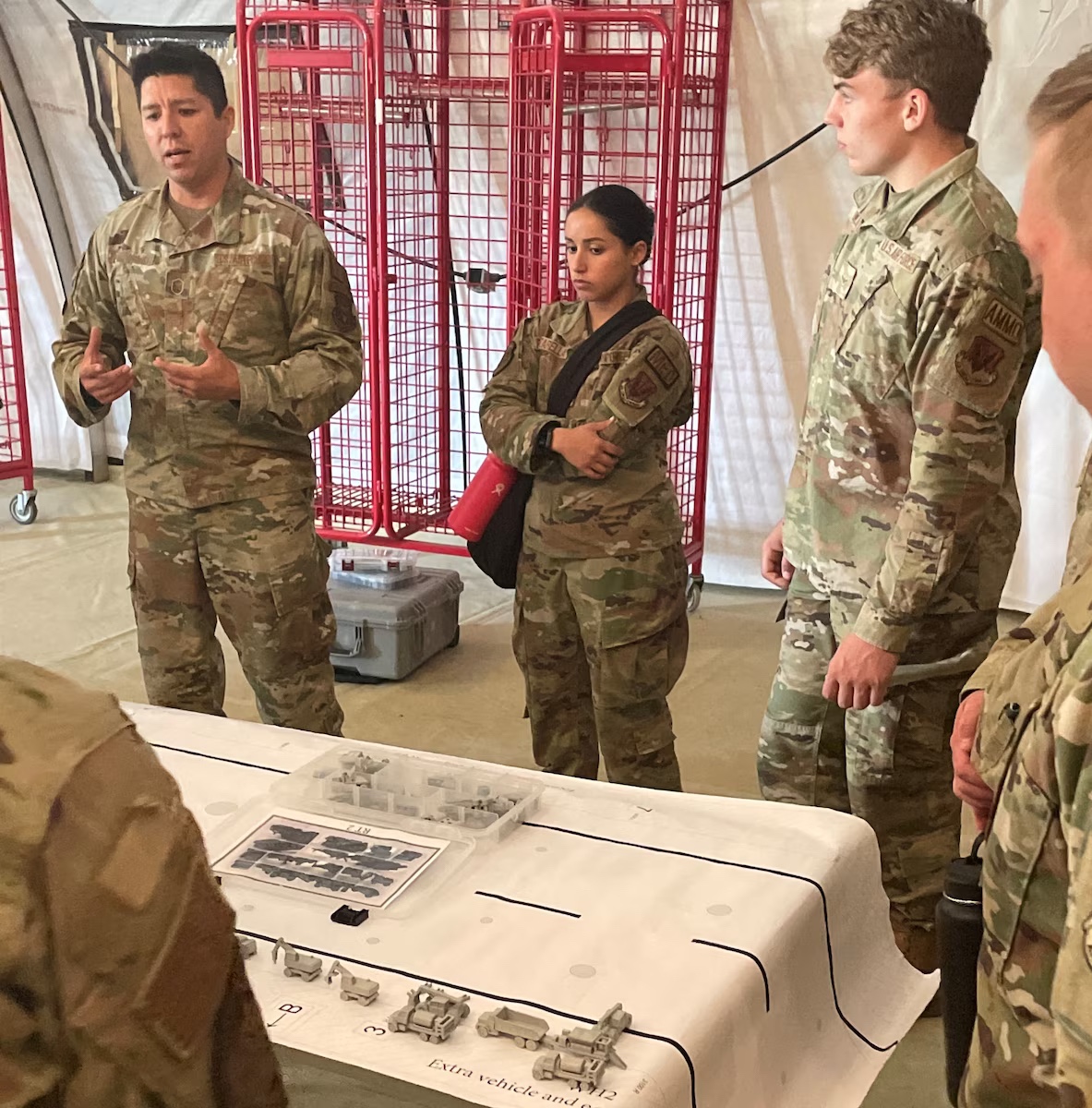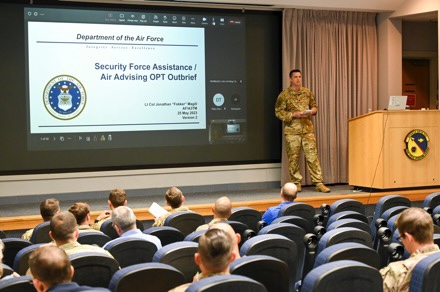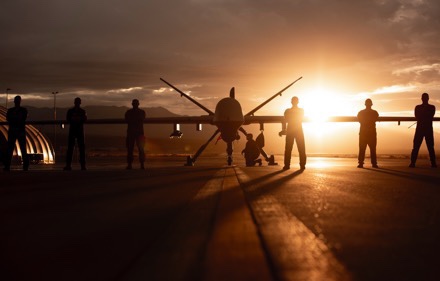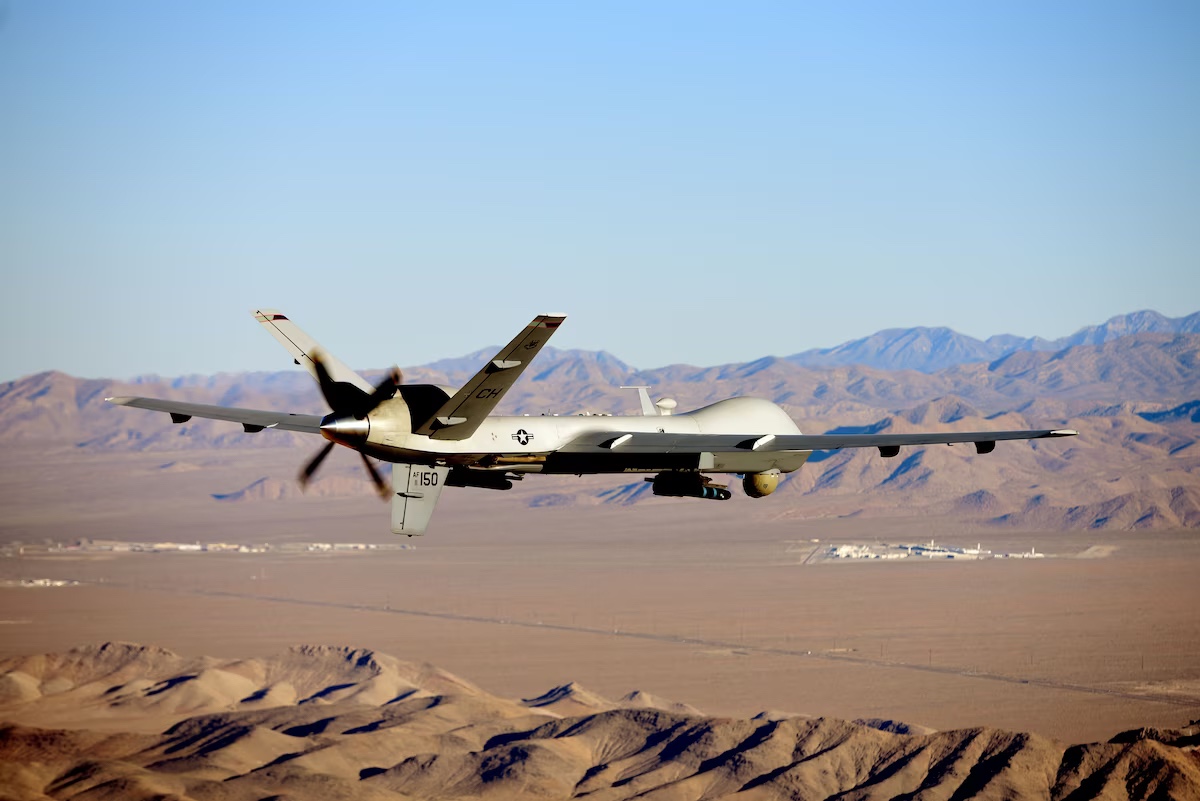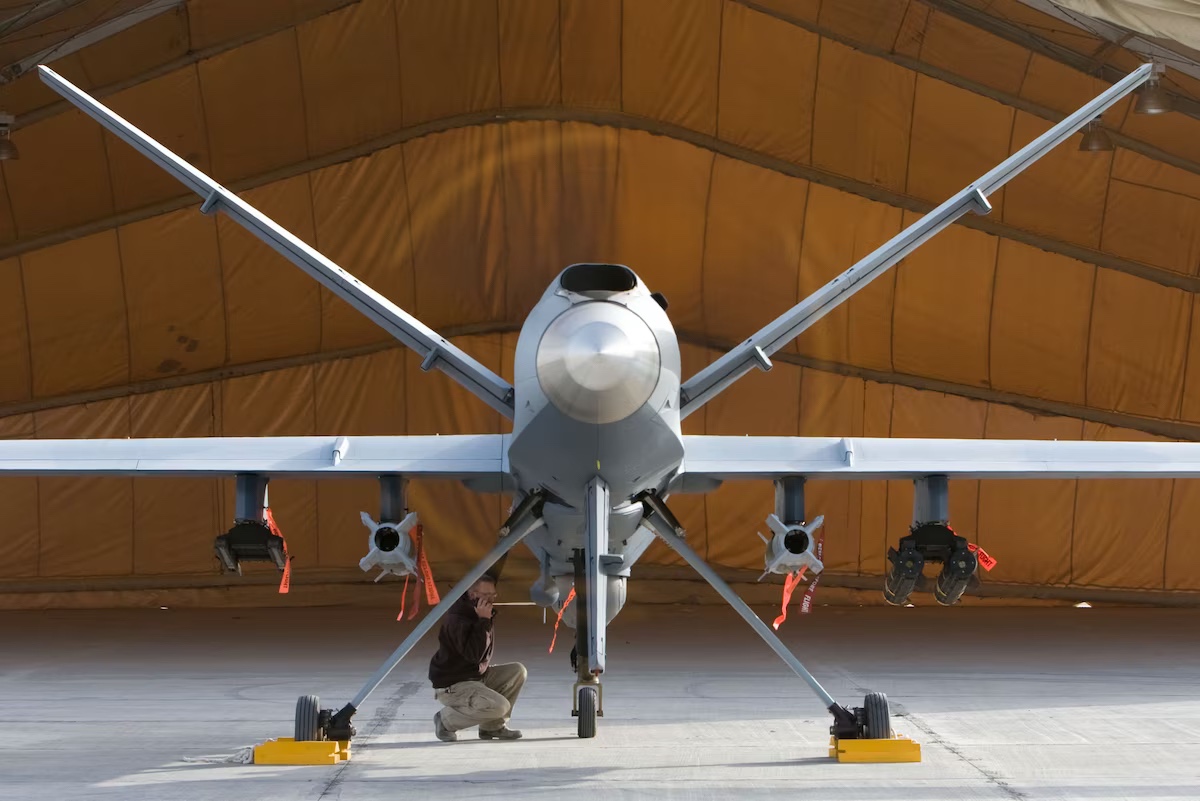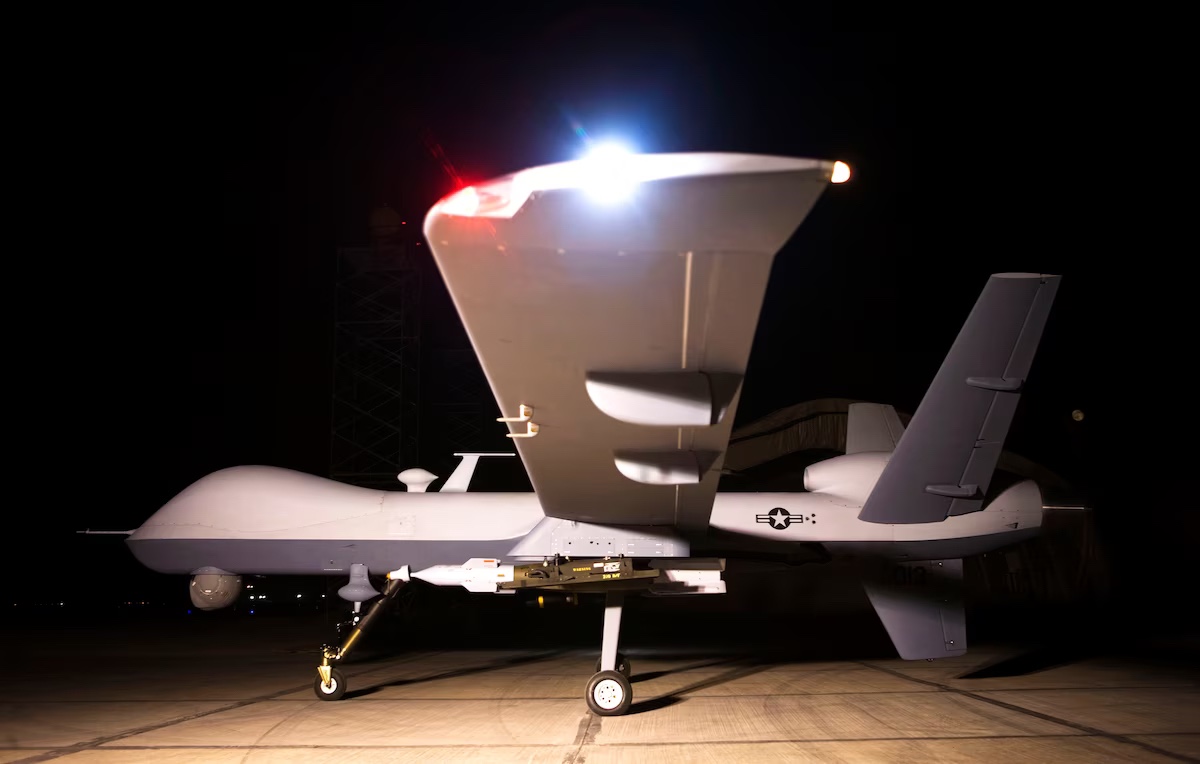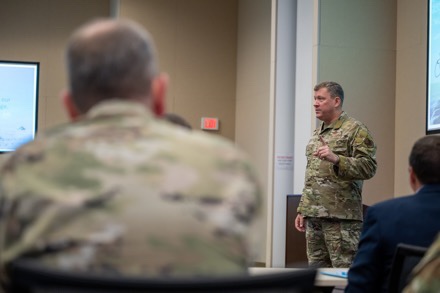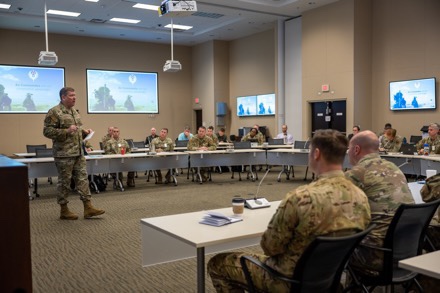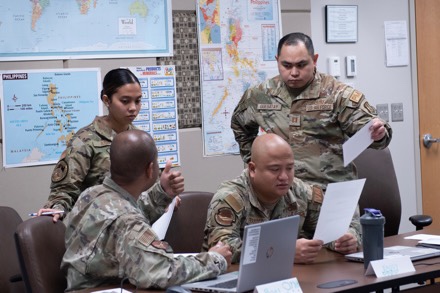
MAXWELL AIR FORCE BASE, Ala. (AFNS) —
The National Defense Strategy and the U.S. Indo-Pacific Strategy identify the Indo-Pacific as a priority theater vital to the nation’s security and prosperity.
The Air Force Culture and Language Center has partnered with the Air Force Special Operations School and the Defense Language Institute Foreign Language Center on an innovative agile combat employment course. The most recent course focused on U.S. Indo-Pacific Command and taught in the Tagalog language, to demonstrate U.S. long-term commitment to strengthening partner autonomy and options throughout this region.
Eight Tagalog-speaking scholars in the Air Force’s Language Enabled Airman Program with a wide range of operational backgrounds — from medical and cyber operations to logistics and bioenvironmental engineering—were competitively selected to participate in this three-week course, held May 8-26, at Hurlburt Field, Florida.
The course is designed to build on the language and cultural skills they’ve gained throughout their LEAP experience to prepare them for Agile Combat Employment and their role in advancing a free and open Indo-Pacific region.
“There’s a sense of urgency in seamlessly working with partners and allies for integrated deterrence, especially in the INDOPACOM region,” said Howard Ward, AFCLC director. “Our force must understand culture to work with our counterparts and be highly skilled in the languages to get tempo and speed to build capacity and operating capability for ACE to be a credible deterrent.”
The program consists of one week of the special operations school’s “Intercultural Skills for Engagement,” or ENGAGE, course followed by two weeks of operationally focused advanced Tagalog language and cultural studies taught by a DLIFLC professor.
During the two weeks of operationally focused language studies in Tagalog, students gained knowledge and enhanced language proficiency on strategic topics relevant to the INDOPACOM theater, such as the state of Philippine and U.S. relations, Philippine and China relations related to economy, current events, and humanitarian aid and recovery efforts.
“This course connects Airmen to the operational environment in the safety of the classroom while still offering sufficient authenticity and operational relevance,” said Dr. Aleksandra Churinov, site director for the DLIFLC Hurlburt Field Language Training Detachment.
The students also took a deep dive into the Enhanced Defense Cooperation Agreement to lead in-depth discussions on U.S. basing scenarios in the Philippines. This educational model prepared LEAP Scholars to use their language, regional expertise, and culture skills to facilitate future strategic conversations among senior leaders of U.S. military, partners, and allies in the Indo-Pacific while effectively bridging cultural barriers to enable ACE.
“There have been several announcements recently on basing and access agreements with the Philippines that are extremely important,” Ward said. “These students are being prepared in a unique way to have the conversation on how we, both the U.S. and the Philippines, can build our capacity together to move as one seamless team in deterring aggression from our adversaries.”
The ENGAGE course included lessons to help students enhance cultural competencies for military operations in areas such as modern information warfare, conflict de-escalation, negotiation strategies for military effectiveness, and key leader engagements. LEAP Scholars also integrated with air commando students during the course, providing a deeper cultural context to each lesson.
“It was incredible to have the Filipino students in this course to provide accurate and insightful cultural context to all the lessons we covered,” said Maj. Krista Schaeffer, a non-standard aviation pilot enrolled in the ENGAGE course. “I felt lucky to have this opportunity. I think this collaboration is a win-win, and I am excited about the future iterations.”
Scholars put the knowledge gained through classroom activities and discussion into practice in realistic scenarios conducted completely in the Tagalog language on operational tactics such as establishing operations centers, developing airfield suitability assessments, and conducting virtual planning conferences. These scenarios equipped students with the skills needed to determine the interest of the Philippines and the U.S. to increase strategic joint capacity.
“We create complex scenarios that students must navigate in the target language to demonstrate their cultural knowledge and understanding. When our Tagalog group can go to the Philippines and serve as liaisons between the Philippine military, the Filipino population, and the U.S. military personnel, they can bring a greater level of understanding and integration to facilitate a strategic partnership,” said Lt. Col. Jared Cordell, special operations school’s chief of faculty development.
Master Sgt. Ramchand Francisco, one of the Tagalog LEAP Scholars who participated in the course, recently supported bilateral cooperation in the Philippines with the Philippine marine corps and U.S. counterparts through LEAP. From his experience during that mission and this course, he said he saw the need to build rapport in the Philippines as one of the most critical factors for seamless integration in the Indo-Pacific region.
“The U.S. is very transactional and wants to get the job done in bilateral relations with the Philippines, but the Philippines will not agree without trust and a mutually beneficial bilateral connection. Our cultural skills as LEAP Scholars are essential to facilitate that strategic relationship,” he explained.
Upon completion of the course, these multi-capable Airmen will be postured to support advancing a “free and open Indo-Pacific” by modernizing long-standing alliances and strengthening emerging partnerships through expertise in the Tagalog language and the Philippine culture. They will also leave the course with integrated capabilities and interoperability across core functions, a vital component of the ACE framework.
By Mikala McCurry, Air Force Cultural Language Center Outreach Team
